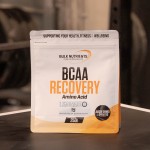The 80/20 Rule of Endurance Training

Why follow this?
Quite simply, scientific studies have clearly demonstrated that endurance adaptations are maximised when your training is split between 80% easy work and 20% hard efforts.
In relation to the 80% easy, you get your greatest aerobic adaptations at training intensities below 70% of your maximum heart rate. And yes, training at the 80% ‘easy’ level means training slower for the most part.
The effort/intensity level linked to this is below the lactate threshold. If you don’t use a heart-rate monitor, that’s the level of effort/intensity where you can comfortably hold a conversation and not noticeably hear your breathing.
The 20% hard is the opposite: Above 85% maximum heart rate, where it feels uncomfortable, hard, and you are unable to hold a conversation.
Why train ‘easy’?
While training primarily ‘easy’ might seem counterintuitive to be able to race fast, it works.
However, most endurance athletes lack the patience or discipline to follow this tried and true training tenet. The reality is it takes YEARS to properly adapt the body to the loading of endurance training.

Can you improve endurance fitness with HIIT?
Whilst intervals and HIIT (High-Intensity Interval Training) might seem like the ‘hack’ or ‘shortcut’ to get quicker results and improve your fitness, your gains will quickly taper off.
Too much HIIT creates consistent high training stress which will wreck your hormone levels and put you on a one-way ticket to a soft-tissue injury.
I’ve seen it time and time again. Did you know that 80% of runners will suffer a training-related injury within any 12-month period?
Endurance training success comes from playing the long game – So train easily for most of the time, go hard for a little bit, and you’ll be primed for endurance success.
References:
- Stöggl, T. and Sperlich, B., 2015. The training intensity distribution among well-trained and elite endurance athletes. Frontiers in Physiology, [online] 6, p.295. Available at:The training intensity distribution among well-trained and elite endurance athletes.
Related Blogs

SportsFuel 101 Endurance Sports Nutrition
Posted by Nicole Frain
Estimated reading time: 8 minutes

Brick Training for Endurance
Posted by Nicole Frain
Estimated reading time: 3 minutes































